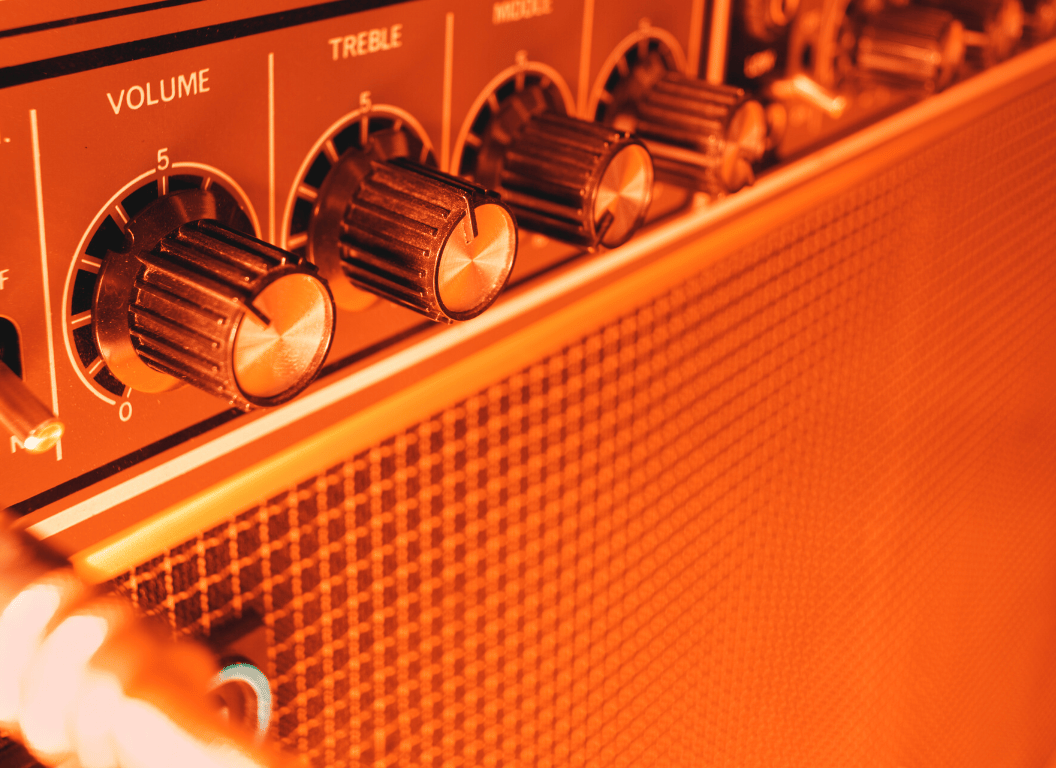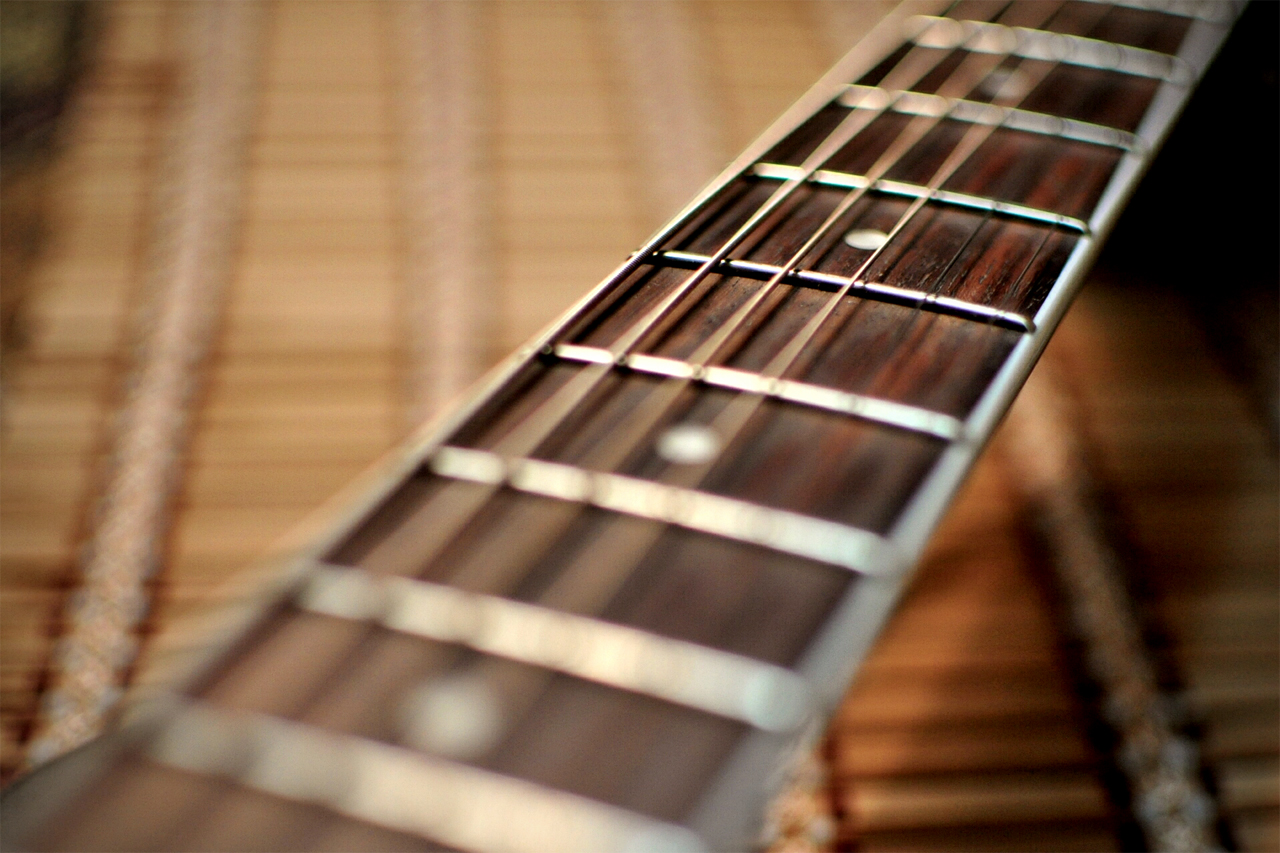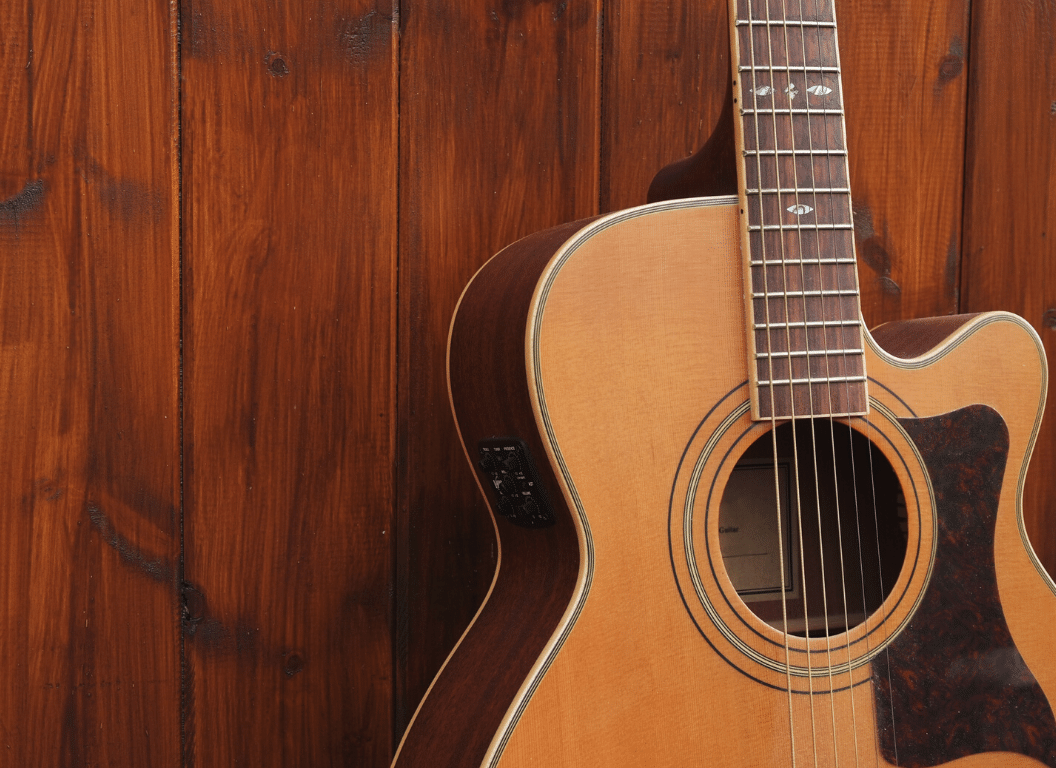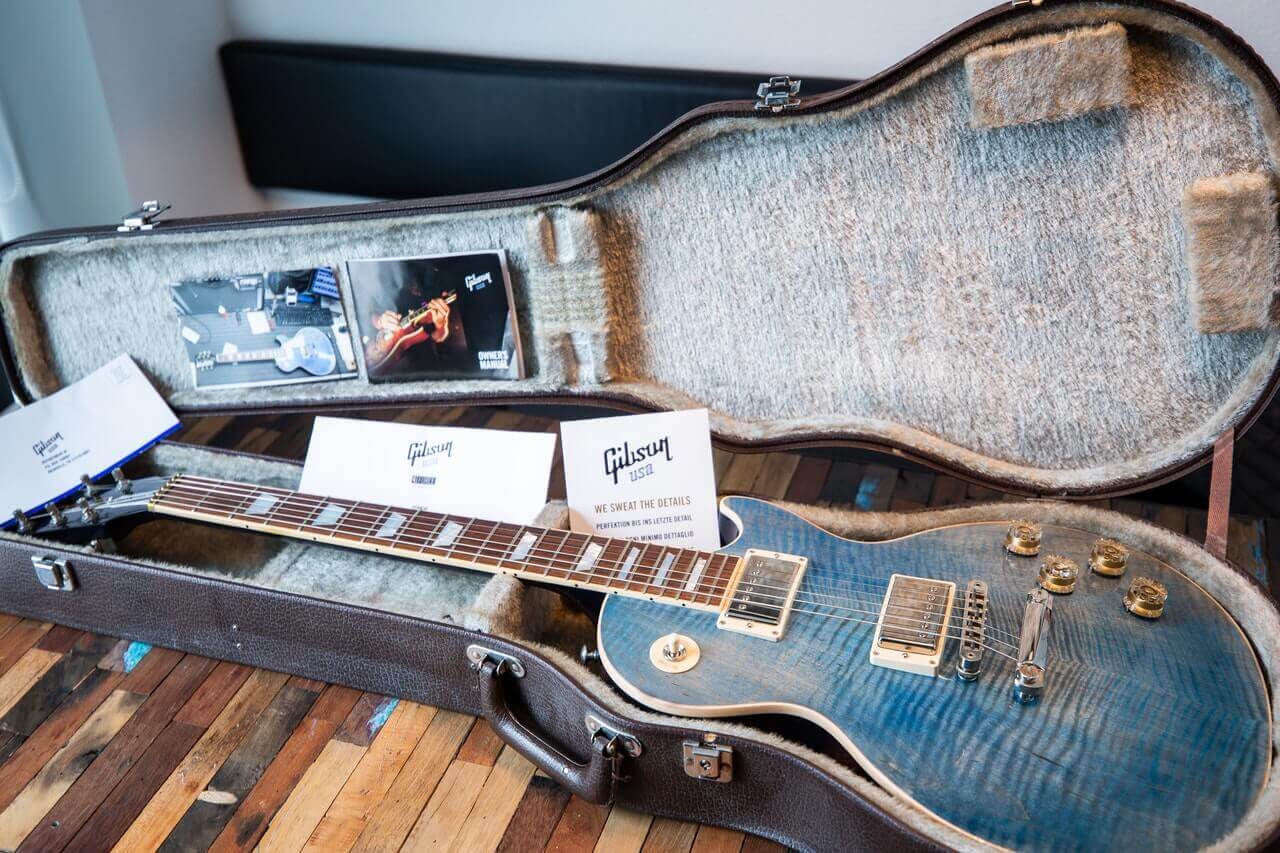There’s no denying the crucial role a guitar amplifier plays in a musician’s setup.
This equipment is designed to modify and project sound cleanly and loudly, becoming an essential component in both casual and professional stages.
These machines, while sturdy and reliable, are often subjected to high stress and voltage.
Extreme heat generation is a normal process, but when that heat becomes excessive, it can create unwanted situations and harm the device itself.
This raises valid concerns regarding the integrity, safety, and durability of these instruments.
In this blog, we are going to explore the circumstances that might lead to these safety risks and how they can be mitigated.
Table of Contents
- Could A Guitar Amp Catch Fire Or Explode?
- What Causes Guitar Amp Overheating?
- Triggers of Electrical Fire in Guitar Amps
- Can a Tube Amp Explode?
- Prevention Measures Against Guitar Amp Accidents
- Common Wiring Issues in Guitar Amps
- Tube Amp vs. Solid State Amp Safety
- What Happens if You Leave Your Amp On Too Long?
- How to Properly Store and Maintain Your Guitar Amp
- Role of Power Conditions in Guitar Amp Safety
- Can Playing at High Volume Cause Amp Damage?
- The Bottom Line
Could A Guitar Amp Catch Fire Or Explode?
Yes, a guitar amplifier can potentially catch fire or even explode under certain conditions. This could occur if the amp is improperly wired, has a faulty power supply, or is subjected to exceedingly high voltage or current, which can produce excessive heat. Therefore, regular maintenance and proper usage are crucial to prevent such accidents.
Going beyond the simple answer, it’s important to examine the underlying causes and preventative measures related to a guitar amplifier catching fire or exploding.
This topic dives not just into the technical aspects of amplifier construction and functionality, but also into broader themes such as electrical safety, regular equipment maintenance, and responsible usage guidelines.
Furthermore, understanding these aspects can significantly increase the lifespan of your equipment and ensure your personal safety.
Keep reading as we delve into these pertinent aspects in the following sections.
What Causes Guitar Amp Overheating?
Overheating of a guitar amplifier can be the result of a variety of factors.
These may range from internal to external issues and can have detrimental effects on the amplifier if not mitigated.
Excessive Usage
Excessive usage is one of the common reasons for an amplifier to overheat.
Just like any other electronic machine, continuous and excessive use of the amp takes a toll on its components, leading to heat generation.
For an amp to operate optimally, it needs breaks to cool down and recover.
If it is pushed to its limits for extended periods, it may not cool down adequately, leading to overheating
For an amp to operate optimally, it needs breaks to cool down and recover.
This excessive heat generation over time can subsequently damage the components of the amplifier, affecting its overall sound and performance.
Hence, it is vital to give your amp rest intervals during long practice or performance sessions.
Improper Ventilation
Another major cause of guitar amp overheating is improper ventilation.
Amps generate heat as they operate and they need sufficient ventilation to dissipate this heat.
If the ventilation is insufficient or blocked, the heat builds up, leading to overheating.
Amps generate heat as they operate and they need sufficient ventilation to dissipate this heat.
Improper ventilation is not just about the physical blocking of the vent, it can also be due to placement of the amp.
Shoving it in tight spaces or corners where the circulation of air is limited can lead to overheating.
So, it is crucial to ensure that the amp is placed in an open area where air can circulate freely.
This video provides a detailed explanation of how to prevent an amplifier from overheating.
After watching, viewers will understand the preventive measures to adopt, maintaining their amplifier’s performance longevity.
Using an Unsuitable Speaker Load
Another reason for guitar amp overheating can be the use of an unsuitable speaker load.
An amplifier is designed to work with a particular load, and using a speaker load that is too low can overwork the amp, causing it to overheat.
An amplifier is designed to work with a particular load, and using a speaker load that is too low can overwork the amp, causing it to overheat.
Therefore, it’s important to match the impedance of your amplifier to that of your speakers to prevent overheating and possible damage.
Incorrect Gain Settings
Lastly, incorrect gain settings can also lead to guitar amp overheating.
If the gain on an amplifier is set too high, it can cause the amp to work harder than necessary, resulting in heat generation.
If the gain on an amplifier is set too high, it can cause the amp to work harder than necessary, resulting in heat generation.
Keeping the gain at appropriately levelled settings not only ensures optimal sound output, but it also prolongs the lifespan of your guitar amplifier.
In all, careful usage and maintenance of a guitar amp are essential in keeping it running smoothly and avoiding overheating issues.
Adopting good practices can help keep your amp in excellent working condition for a longer time.
Triggers of Electrical Fire in Guitar Amps
Determining the various triggers of electrical fire in guitar amplifiers requires understanding basic electrical principles and the specific technological anatomy of these devices.
An Overloaded Electrical Circuit
One contributing factor to an amp fire may be an overloaded electrical circuit.
Amplifiers, like many electronic devices, require a specific voltage and current to operate safely.
A guitar amp is subjected to overload when there is too much load (excessive electrical current) on the amp’s circuit.
Pushing an amp to work under severely overloaded conditions can cause it to overheat, leading to potential fire breakout.
An overloaded electrical circuit is a significant fire hazard as it can lead to serious overheating and consequently, a fire breakout.
Such situations typically arise during power surges or if the device is pushed beyond its limits, emphasizing the importance of electrical safety.
If an amplifier’s wattage output is consistently pushed beyond its safe operating range, it will inevitably overheat and potentially catch fire.
Poor Ventilation and Excessive Dust
Besides overloaded circuits, poor ventilation and excessive dust can also trigger an electrical fire in a guitar amplifier.
An amplifier generates a significant amount of heat during use, which needs to be adequately dissipated to prevent overheating.
Without proper ventilation or if the amplifier is covered in dust, this process is compromised, leading to increased temperatures inside the amp and potential combustion.
Insufficient ventilation or dust accumulation in an amplifier can escalate the device’s temperature to dangerous levels, possibly leading to an electrical fire.
Regular cleaning and ensuring adequate space for airflow around the amplifier are simple yet effective ways to mitigate this fire risk.
The built-up dust acts as an insulation layer, trapping heat inside the amp, and if not cleaned regularly, can lead to a sudden fire breakout.
Faulty Wiring or Damaged Components
Finally, faulty wiring or damaged components within the amplifier can spawn electrical fires.
Electrical fires often start with a spark, which can be caused by worn out or inadequately insulated wires, loose connections, or even blown fuses.
A malfunctioning component may also overheat and ignite due to excessive current flow or short-circuiting, resulting in an electrical fire.
Misaligned wires, loose connections, and faulty components are all fire hazards in a guitar amplifier due to the possibility of sparking or overheating.
As such, periodic inspection and maintenance of these internal elements are crucial to avert potential fire hazards.
If any of these factors are spotted during an inspection, immediate action should be taken to repair or replace the faulty parts before using the amplifier again.
Can a Tube Amp Explode?
Let’s get right into the heat of the matter: can a tube amp explode?
It’s a question that raises concerns about safety when dealing with electronic devices, and it’s certainly worth examining.
First, it’s necessary to have a basic understanding of what tube amps are and how they work.
Tube amplifiers, or valve amplifiers, are a type of electronic amplifier that uses vacuum tubes to increase the amplitude, or power, of a signal.
The tubes are the heart and soul of these devices, responsible for their particular, often preferred, sound characteristics.
Supporting the above quote, the tubes in a tube amp modify the sound signal received by adding a certain level of distortion that is pleasing to the ear.
This unique sound is why many audiophiles and music professionals, even in the era of digital technologies, still opt for tube amplifiers.
The term “explode” might give the impression of a dramatic, dangerous event like that of an exploding firecracker or bomb.
In the context of tube amps, however, the term “explode” generally refers to a tube failure, which in itself can be quite startling, especially to anyone unaccustomed to it.
Tube failures can occur due to a number of reasons including manufacturing defects, physical shock, excessive voltage, aging, or improper use.
When a tube fails, it can create a loud popping noise, release smoke, and potentially even scatter shards of glass – hence the term “explode“.
The key point here is that although a tube amplifier can “explode” in terms of tube failure, it’s not an explosion in the traditional sense, but rather a sudden and unexpected failure of the tube, which can indeed be accompanied by some alarming signs.
Expounding upon the aforesaid quote, while a tube failure might seem like an explosion, it’s mostly contained within the amp itself.
It can still be hazardous, especially if shards of glass are ejected, but it’s not a large-scale explosion that will cause wide-scale damage or injury.
Now that we’ve addressed the question at face value, you could gain a better understanding of how amplifier tubes behave when they are about to fail by watching this video.
Watching this video will help you to know how a power tube going wrong looks and sounds like, furthering your understanding of this topic.
Prevention Measures Against Guitar Amp Accidents
Guitar amp accidents can be potentially damaging to your equipment, and they may even pose a risk to personal safety.
Therefore, understanding prevention measures is crucial to ensure a safe and enjoyable playing experience.
Handling Guitar Amps Properly
The first preventive measure involves handling guitar amps properly.
As these devices can be quite heavy and delicate, mishandling them can cause damage or result in accidents.
Always carry an amp using both hands and ensure a secure grip.
Amps are not meant to be dropped.
Drops or hard impacts can damage the internal components, making the amp function poorly or not at all.
Therefore, always place the amp gently on the ground or on a sturdy surface.
Maintaining a Safe Environment
Another key prevention measure includes maintaining a safe environment around your amp.
Amps produce considerable heat, so they need ample space for ventilation.
Amps should not be covered while in use.
Covering an amp can cause overheating, which may in turn damage the amp and potentially cause a fire.
Also, keep your guitar amp away from water or drinks to avoid electrical accidents.
Regular Inspection and Maintenance
Regular inspection and maintenance are also essential to prevent guitar amp accidents.
Regularly inspect the cords and connections for any damage or loose wiring, as these may result in problems in sound quality or even electrical hazards.
An amp that’s making unusual noises or is getting unusually hot should be checked by a professional.
Unusual amp behavior should signal a need for professional inspection.
Trying to fix an amp without the necessary knowledge can lead to further damage or hazards.
Regular maintenance can also prolong the life of your amp, allowing you to keep enjoying your music for a longer time.
Common Wiring Issues in Guitar Amps
Understanding the internal functioning of guitar amps can be a challenging journey for most individuals, especially if you’re dealing with a wide array of common wiring related issues.
The heart of such matters often revolves around your amp’s build quality and the intensity of its usage.
Issue 1: Loose Connections
One common issue faced by almost every guitarist at some point is loose connections in their equipment.
This is usually because the metal connections or soldered joints inside your amp have loosened due to constant movement or vibrations.
Such problems can cause your amp to make unusual noises, behave erratically or, in extreme cases, stop working altogether.
Issue 2: Short Circuits
Short circuits are another wiring issue that your guitar amp can encounter.
These generally happen when two wires that should not be in contact are touching, causing the electrical current to bypass other components in its circuit.
This can happen due to various reasons like improper wiring, mishandling, or even just age and wear.
For detailed, practical assistance on how to identify and rectify the causes of no sound output from your guitar amp, please consider viewing the following video:
This video provides a thorough walkthrough of a typical guitar amp’s internal wiring, and shares valuable insights on how to troubleshoot common issues.
The expert in the video also demonstrates useful tips to fine-tune your amp for the best results.
Issue 3: Oxidation
If your guitar amp has been dormant for quite a while, another wiring issue could be oxidation.
This usually happens when the metal parts of your amp, like the potentiometers or switches, react with oxygen and begin to rust.
Oxidation can create extra resistance, causing issues with your gear’s performance.
This usually happens when the metal parts of your amp, like the potentiometers or switches, react with oxygen and begin to rust.
Oxidation is a common phenomenon that affects most metallic objects over time.
It’s quite inevitable, particularly in regions with high humidity.
However, with regular usage and maintenance, its effect can be adequately controlled.
During periods of prolonged storage, to prevent oxidation, it’s beneficial to utilize dehumidifiers or similar devices that help maintain optimal conditions for your equipment.
Issue 4: Failing with Age
Last, but certainly not least – with time and usage, some components of your guitar amp may simply fail or degrade.
This includes wires wearing thin, insulation breaking down, solder joints becoming brittle, and so forth.
These age-related issues can lead to erratic operation, reduce the lifespan of other components, or even pose hazards such as electrical shorts.
In comprehensive light, familiarizing yourself with these issues while also learning how to detect and rectify them with the help of this video above can save you from unforeseen gig disasters and expensive repairs.
Moreover, it can also significantly streamline your journey towards perfecting your guitar tones.
Tube Amp vs. Solid State Amp Safety
One of the key considerations when choosing between a tube amp and a solid state amp is indeed the matter of safety.
While both types of amplifiers can produce great sound, their design features and functionality can lead to varying levels of risk.
Operating Temperatures
Tubes in a tube amplifier can reach extremely high temperatures during operation.
This can lead to potential burn risks if not handled properly, and the longevity of these components can be shorter than solid state components.
On the other hand, solid state amplifiers are often significantly cooler during operation as they do not rely on glowing tubes to generate sound.
As a result, the risk of burns from handling the amplifier while it is in use is greatly reduced with solid state amps.
Tubes in a tube amplifier can reach extremely high temperatures during operation.
This is something that should not be taken lightly, especially in an environment with children or pets who might accidentally touch the amp.
The constituents of tube amps, including the glass tubes themselves, are more vulnerable to physical damage than the solid components of a solid state amp.
Electrical Safety
Tube amplifiers operate at much higher voltages than solid state amps.
This means that there is an inherent risk of electrical shock if you are not careful when dealing with these devices.
This risk is significantly lower with solid state amps, which operate at safer voltages.
Overheating is another concern with tube amps; excessive heat can lead to component failure or even fire hazards.
Tube amplifiers operate at much higher voltages than solid state amps.
With that being said, it is absolutely critical to ensure that tube amps are properly maintained and monitored for signs of trouble.
If you notice the amp is running hotter than normal or if there is a strange smell, shut the amp off immediately and investigate.
Knowing and understanding the safety implications between tube amps and solid state amps can inform your decision when considering which one to purchase.
Always remember that the quality of the sound produced should not be the sole factor to consider; the safety of those around you is equally important.
What Happens if You Leave Your Amp On Too Long?
Whether you are a guitar enthusiast, a professional musician, or a recording studio engineer, it is crucial to understand what could potentially happen after leaving an amplifier on for extended periods.
Many people believe that amplifiers, like all electronic devices, are built to tolerate being left on for long hours without significant problems.
Heat Build-Up
The truth is, prolonged operation of an amplifier can lead to heat build-up.
This is because the electrical components perform complex tasks, leading to the generation of heat as a byproduct.
Excessive heat can potentially damage the sensitive electrical components, decreasing the lifespan of your amplifier.
Excessive heat can potentially damage the sensitive electrical components, decreasing the lifespan of your amplifier.
This might lead to greater repair costs in the long run, or in the worst-case scenario, a total replacement of the amp.
Also, a hot amp can pose a risk of causing a fire if left unattended for a long period.
The Wear and Tear Factor
Just like any other electronic device, the components of an amplifier are subject to wear and tear.
The effects may not be immediate but over time, the constant operation degrades the internal components, reducing performance or causing malfunctions.
The tubes, capacitors, and resistors are most likely to suffer from constant usage.
The tubes, capacitors, and resistors are most likely to suffer from constant usage.
Replacing these components can be expensive and time-consuming, especially for tube amplifiers.
Therefore, it’s wise to switch off and unplug the amplifier when it’s not in use.
Watching this video can provide you with more detailed information regarding the realities of standby switches on your amplifier.
You might gain a deeper understanding of how your amplifier works and how to more appropriately take care of it during long sessions.
Elevated Electricity Costs
Amplifiers draw a considerable amount of electricity, which over a period of time, can lead to increased electricity bills.
Even amplifiers that aren’t actively being used, but are left on, will still consume electricity, leading to wasted energy.
So, it’s a good idea to turn off your amplifier when it’s not in use to save on electrical costs.
So, it’s a good idea to turn off your amplifier when it’s not in use to save on electrical costs.
Not only will this be lighter on your pocket, but it’s also more environmentally friendly.
Electrical conservation is something we all should be conscious of in today’s energy-conscious society.
How to Properly Store and Maintain Your Guitar Amp
Storing and maintaining a guitar amp requires careful attention, diligent upkeep and a regular cleaning routine.
Initial Storage Preparation
Consider the environment in which your guitar amp will be stored.
The location should be safe from extremes of temperature and diversity, and away from water and direct sunlight.
Exposure to these factors can damage internal components and degrade the overall efficiency of your amplifier.
A good storage solution could be a hard case or cover, specifically designed for amps to protect it from dust and any accidental impact.
A good storage solution could be a hard case or cover, specifically designed for amps to protect it from dust and any accidental impact.
This quote emphatically highlights the importance of a secure and structured protection method for your guitar amplifier in transit or storage, and how this can significantly extend its lifespan by minimising exposure to potential degradation factors.
Routine Maintenance
Establishing a regular cleaning and maintenance schedule is also essential to keep a guitar amp in top condition.
Dusting the amplifier frequently using a microfiber cloth can avoid dust build-up.
It’s crucial to always unplug the amp before cleaning it to avoid electric shock.
Further,vendor-specific maintenance guidelines should be strictly followed to avoid unintentional damage.
Inspect the amp cables regularly for any signs of wear or damage to ensure perfect sound quality.
It’s crucial to always unplug the amp before cleaning it to avoid electric shock.
Ensuring safety while cleaning amps is incredibly vital as ignoring this caution could lead to serious injury.
Moreover, adherence to this guideline will also prevent any unintentional damages to the amplifier from electrical surges.
Long-Term Storage Tips
If you’re storing your guitar amp for an extended period, you should take a few extra precautions.
Ensure the controls are set to neutral or zero position to avoid stress on the internal electronics when not in use.
This reduces the chance of parts overloading or failing when eventually turned back on.
Finally, securely pack the amp in its protective case or cover and store in a safe, dry place.
Ensure the controls are set to neutral or zero position to avoid stress on the internal electronics when not in use.
Minimising internal strain over time can hugely contribute to the longevity of your guitar amplifier.
This step is often overlooked despite its simplicity and effectiveness – adjusting the knobs to a neutral position helps retain the amp’s optimal functionality when resumed.
Role of Power Conditions in Guitar Amp Safety
The role of power conditions in the safety of guitar amps is a crucial but often overlooked aspect of guitar equipment maintenance and care.
Power conditions control and modulate the electrical input a device such as a guitar amplifier receives.
They therefore play a significant role in protecting the device from power spikes, electrical interference, and inconsistent power supply that would otherwise damage the amplifier or negatively impact its performance.
Power spikes and interference can lead to hardware damage, while inconsistent power supplies affect sound quality.
Protection from Power Spikes, Outages, etc
Power conditions offer effective protection from power spikes, surges, and electrical interference.
Power spikes or abrupt increases in voltage flow can damage or destroy amplifier hardware over time.
Furthermore, power conditions can ensure the smooth functioning of the amplifier during power outages and protects against electrical interference that can distort sound output and quality.
By taking some time to watch the included video, you’ll gain a better understanding of what a power conditioner is and its general function.
You’ll also discover essential facts about how you can use power conditioners to enhance the safety and performance of guitar amps.
The role of power conditions in power stability
Power conditions also play a fundamental role in providing power stability to guitar amplifiers.
Stability in this context refers to the consistent supply of the correct power (voltage and current) required by the amplifier for optimum performance.
Unregulated and unstable power supplies can result in distorted and poor-quality sound from a guitar amplifier.
Unregulated and unstable power supplies can result in distorted and poor-quality sound from a guitar amplifier.
Supporting this statement, unstable power supply to an amplifier can cause problems like volume fluctuations and inconsistent sound output.
Specifically for tube amplifiers, it can also decrease tube life which results in frequent and expensive tube replacements.
Stable power ensures consistent amplifier performance and the power condition plays an integral part in providing that stability.
Maintaining the Lifespan of the Amplifier
Finally, power conditions help extend the life of guitar amplifiers by protecting them from power-related issues and ensuring they receive a consistent and stable power supply.
As discussed earlier, these conditions mitigate the risk of damage from power spike, inconsistent power supply and electrical interference.
All these factors contribute to maintaining the amplifier in good condition, thus prolonging its lifespan and ensuring superior sound quality.
Therefore, using a power conditioner with a guitar amplifier not only enhances the amplifier’s performance but also significantly contributes to its safety and longevity.
Can Playing at High Volume Cause Amp Damage?
The common understanding among many musicians is that playing at high volumes can potentially damage your amplifier.
This belief, while not entirely unfounded, is backed by quite a few technical realities that may contribute to an amp’s demise.
Firstly, one crucial component to take into consideration is the type of the amplifier being used.
In the case of tube amplifiers, the answer is a resounding yes.
Continuous high-volume playing can lead to the tubes overheating, resulting in damage or a significant decrease in lifespan.
Continuous high-volume playing can lead to the tubes overheating, resulting in damage or a significant decrease in lifespan.
Arguably, the wear and tear on the tubes is more a result of the intense heat generated from constant high-volume use.
As a result, this can subsequently lead to coloration or harmonic distortion of the sound output.
To further explain, a harmonic distortion is a type of noise that can be produced when the tubes are pushed to their extremes.
While this type of noise is often desired by electric guitar players for its rich, crunchy character, it can indicate that the tubes are being strained and may soon need to be replaced.
On the other hand, solid-state amplifiers can generally handle high volumes with more resilience.
This is not to say that a solid-state amplifier cannot be damaged by loud volumes.
But the damage caused is often not as critical as it can be with tube amplifiers.
However, it’s important to note that even solid-state amplifiers aren’t invincible.
Playing consistently at maximum volume can cause components to overheat, creating potential for damage.
This is because most solid-state amplifiers contain built-in protection circuits that help prevent the amp from reaching dangerously high temperatures.
Nonetheless, even these circuits have their limits and may fail if the amplifier is constantly pushed to its brightest limit.
The Bottom Line
Ensuring the safety and optimizing the performance of your guitar amp requires a thorough understanding of its working and potential issues.
Overheating and electrical fires can be a result of several factors, including faulty wiring and improper handling.
While a tube amp can face the risk of explosion, preventative measures can mitigate such accidents.
Understanding the differences between a tube amp and a solid-state amp’s safety can further guide your usage.
Leaving your amp turned on too long may lead to potential damages, emphasizing the importance of proper handling and storage.
Elements such as power conditions can significantly affect the amp’s safety, and playing at high volumes can potentially damage the amp.
The onus, therefore, lies in mindful usage, maintenance, and understanding of your guitar amp’s mechanism to ensure its longevity and your safety.

An avid storyteller and music lover that devotes all his free time to mastering the art of playing guitar. I’ve played acoustic for 6 years, and recently started playing electric guitars. Currently playing an Epiphone SG Special!




